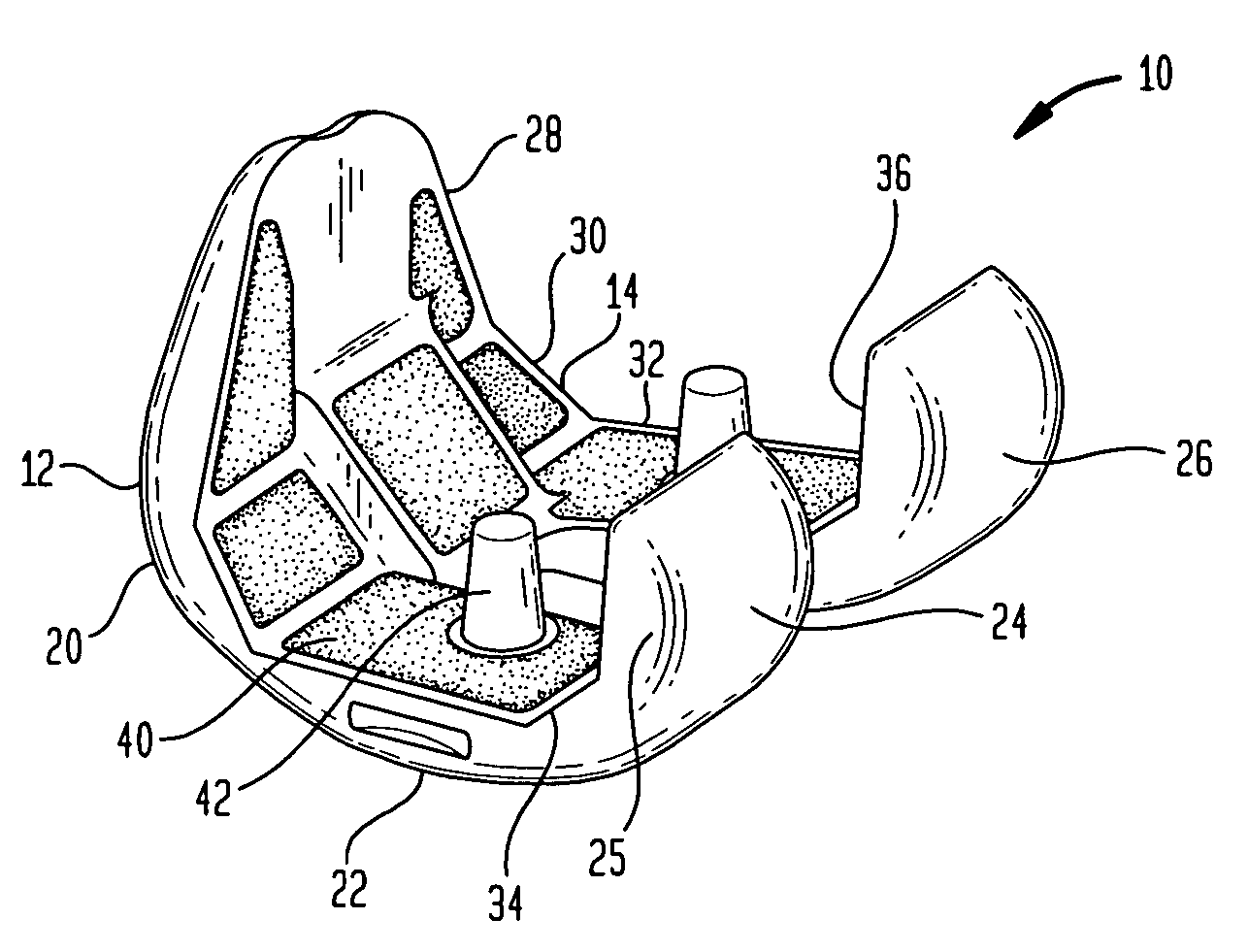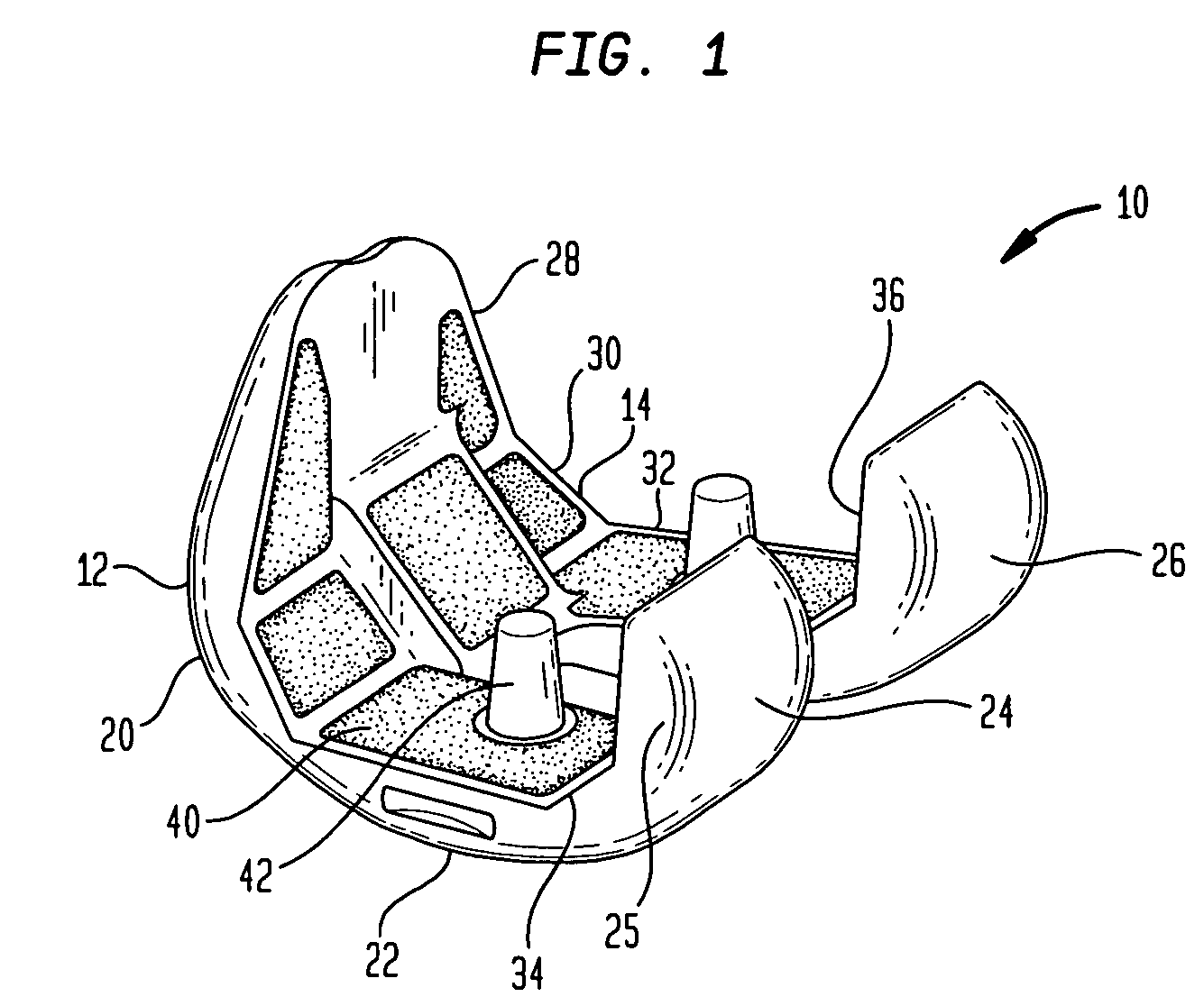Laser-produced implants
a three-dimensional structure and laser-produced technology, applied in the direction of shoulder joints, prostheses, manufacturing tools, etc., can solve the problems of high cost and time consumption of procedures, and the field has not focused on reducing the density of three-dimensional structures or growing a porous surfa
- Summary
- Abstract
- Description
- Claims
- Application Information
AI Technical Summary
Problems solved by technology
Method used
Image
Examples
Embodiment Construction
[0029] The present invention relates to a method of forming an implant to be positioned in vivo during surgery, especially an orthopedic implant that replaces a joint, such as a knee joint, hip joint or shoulder joint. Although the present invention will be described with reference to a femoral component, the exemplified element should in no way be perceived as a limiting feature.
[0030] As used herein, the following directional definitions apply. Anterior and posterior mean nearer the front or nearer the back of the body respectively. Thus, for the knee joint described herein, anterior refers to that portion of the knee that is nearer the front of the body, when the leg is in an extended position. Proximal and distal mean nearer to or further from the root of the structure, respectively. For instance, the distal femur is part of the knee joint further from the hip joint while the proximal femur is closer to the hip joint. Finally, the adjectives medial and lateral mean nearer the s...
PUM
| Property | Measurement | Unit |
|---|---|---|
| porosity | aaaaa | aaaaa |
| speed | aaaaa | aaaaa |
| force | aaaaa | aaaaa |
Abstract
Description
Claims
Application Information
 Login to View More
Login to View More - R&D
- Intellectual Property
- Life Sciences
- Materials
- Tech Scout
- Unparalleled Data Quality
- Higher Quality Content
- 60% Fewer Hallucinations
Browse by: Latest US Patents, China's latest patents, Technical Efficacy Thesaurus, Application Domain, Technology Topic, Popular Technical Reports.
© 2025 PatSnap. All rights reserved.Legal|Privacy policy|Modern Slavery Act Transparency Statement|Sitemap|About US| Contact US: help@patsnap.com



